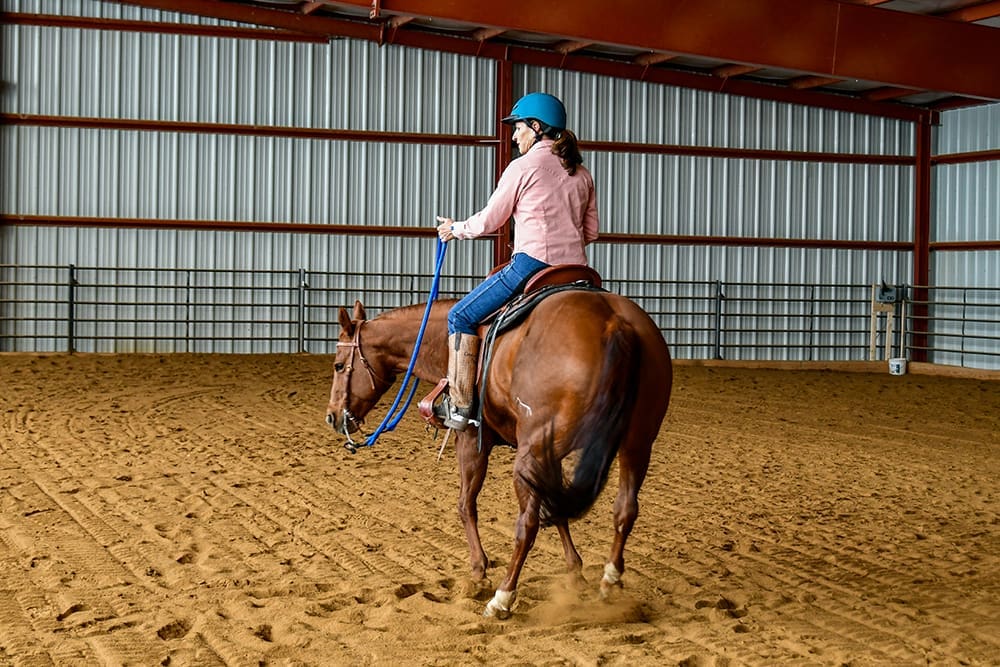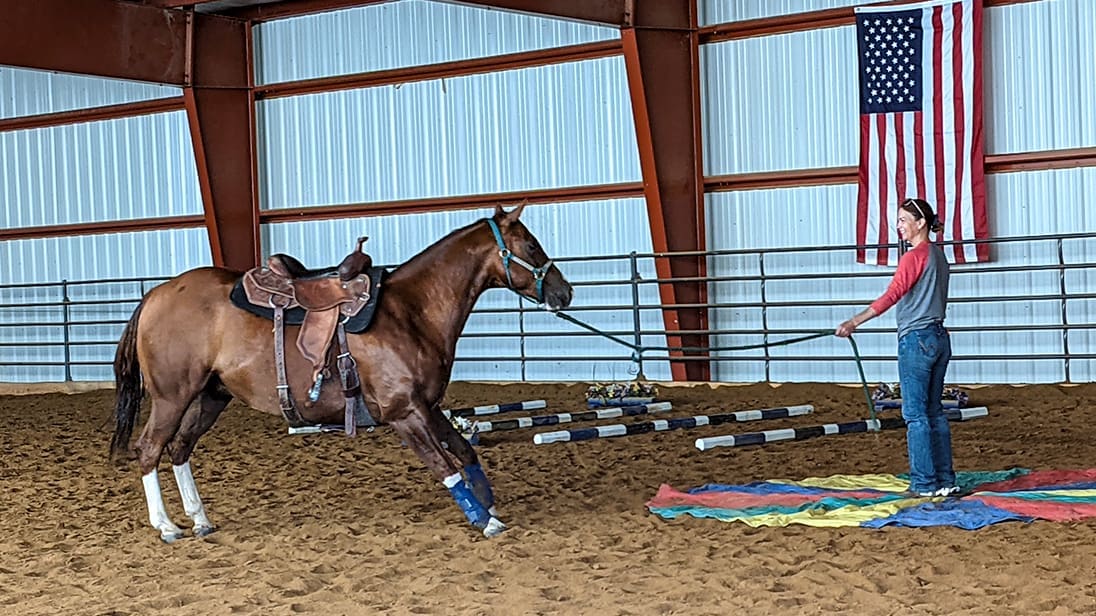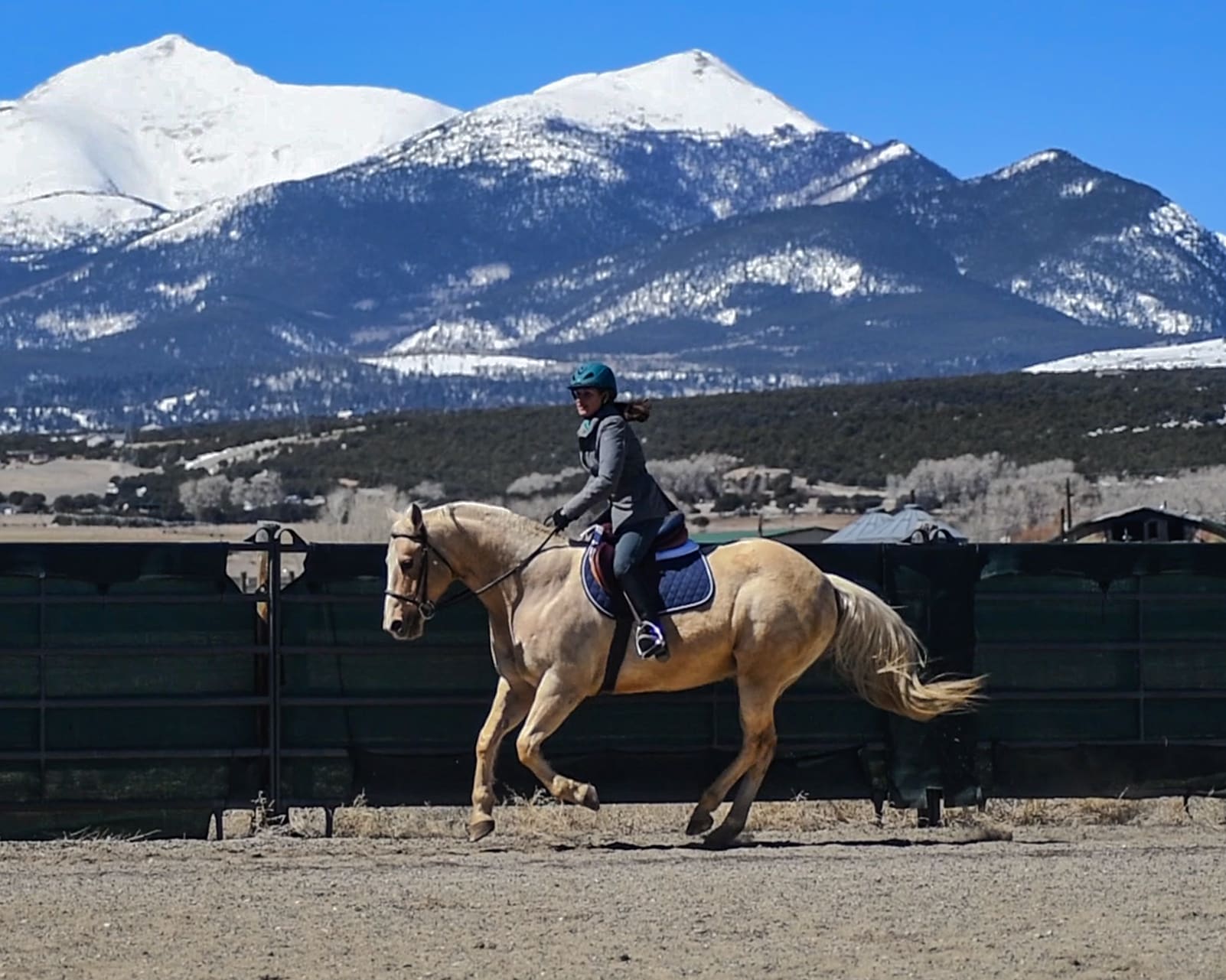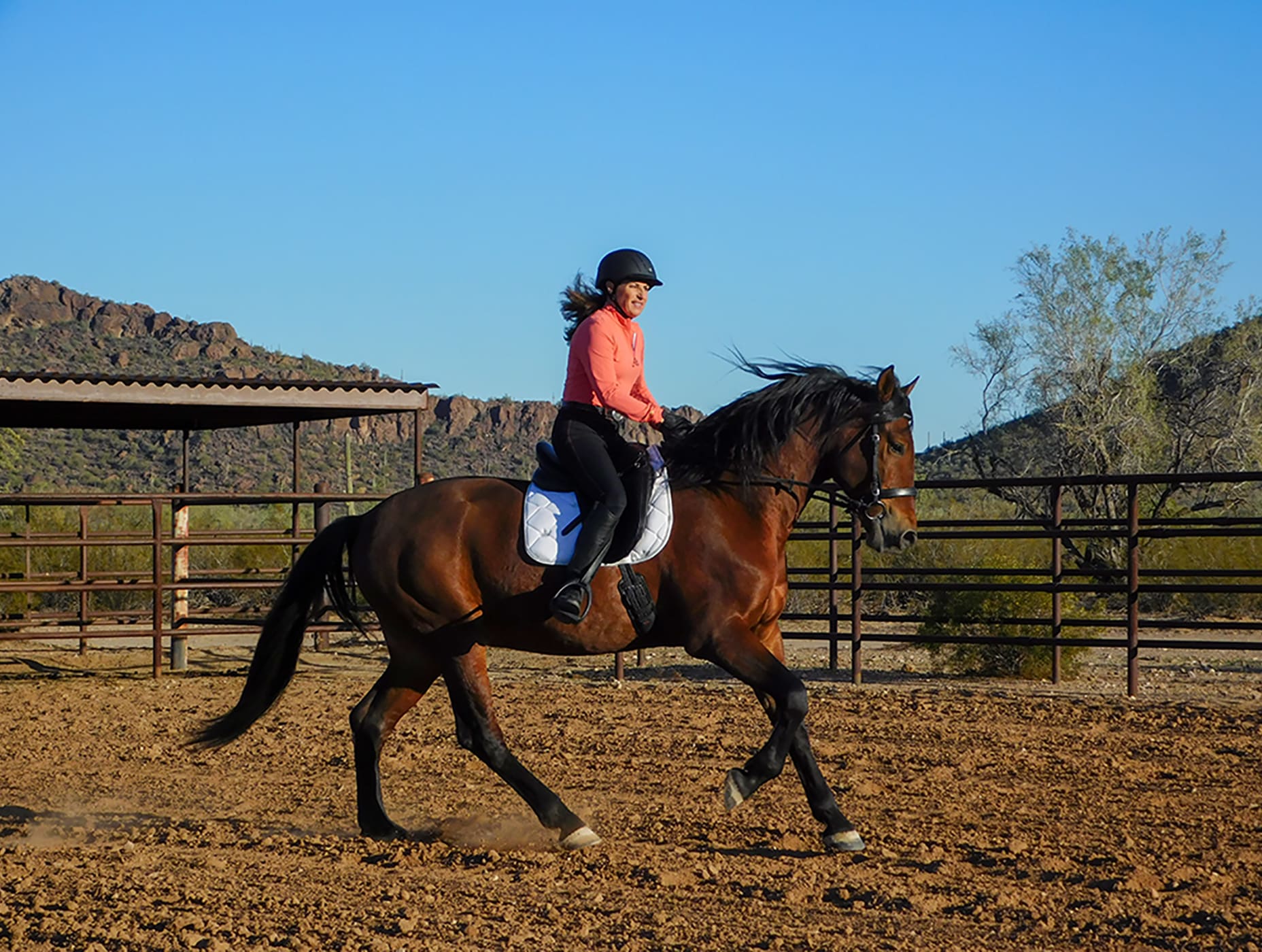Teaching Techniques
Surviving First Canter Lessons
By Julie Goodnight
Canter: Sometimes, the mere mention of the word is enough to send riding students into panic and cause high blood pressure in the instructor. And it usually isn’t much fun for the school horses either. But there is a great allure to cantering, whether the rider is mortified of it or not, and it is the stuff of their dreams– cantering off into the sunset with their trusted steed.
Before even thinking about introducing your students to the canter, consider this age-old wisdom of classical horsemanship: the best way to improve the canter is to improve the trot. I tell this to riders in my clinics all the time. Don’t get in a hurry to canter; keep working at the trot until you are ready. When the rider can ride the trot well; posting, sitting and standing; circling and going straight; making effortless transitions up and down; it is time to introduce the canter.
There are many different opinions on how to teach the first canter and there is no one right way (although there are many wrong ways, like starting them all at the same time). After 30 years of teaching and working with thousands of riders, I have come up with some dos and don’ts that have served me well over the years.
First and most important Do–always check the cinch or girth before starting any canter work. In normal circumstances at the canter (with an experienced rider) the rider’s weight shifts into the outside stirrup (when the horse is on the correct lead) and the saddle can get crooked. Add to that equation a loose cinch and an off-balance rider and it is highly likely someone is going to eat dirt.
Although I know of instructors that have had success teaching the canter on a longe line, personally I would never do it that way. learning to ride the canter on a straight line is much easier than turning. Where you tend to lose riders is in the corners or on the turns. Even on a straight line at the canter, the rider’s weight is shifting to the outside if the horse is on the correct lead. The centrifugal energy created by putting the horse on a longe line exacerbates his problem. Many beginner school horses don’t have the training and conformation to canter a small circle in a balanced way, making it ever harder for the rider to learn. It’s not to say that it can’t be done safely; it can– with the right horse and a suitable environment. But for me, I like to keep them on the straight away at first.
I think it is really important to prepare your students well before their first canter. I like to talk about how it is different from the walk and trot, talk about what suspension is and how the gait feels and how your body moves at each gait, particularly the differences between the trot and canter (more vertical–up and down movement at the trot and more pumping/circular motion at the canter).
“I like the beginner riders to only canter the long straight line of the arena and to bring the horse back to trot before the corner.”
The single biggest mistake beginner riders make is leaning forward and closing the pelvis at the canter, causing them to get thrown up and out of the saddle in a posting motion each time the horse comes into suspension. So I really emphasize sitting back, even slightly behind the vertical. This is why “pushing the swing” is such an effective analogy for the canter.
I think it is critically important to have a good demonstration of what it looks like to ride the canter, before they do it, so they have a good visual image of how to ride the canter. I also think it is important in the demonstration to show what happens
to the horse’s head as he canters (moving down with each stride) and especially how far he drops his head on the very first stride as he is launching his entire body weight off the ground. I spend a lot of time explaining what happens to the horse if the rider does not give an adequate release and causes the horse to slam his mouth into the bridle. This is a particular concern for fearful riders who may flinch and suck up on the reins when the horse first starts to canter. When this happens, the rider is punishing the horse for doing something she asked the horse to do. That is very unfair to the horse and at best will prevent the horse from cantering and at worst will make the horse fear the canter departure and distrust the rider.
How you set up your riders for the first canter depends a lot on the number of riders in the group, the horses, the size of arena, and how much help, if any, that you have. There are many acceptable ways to do it– each has it’s own advantages and disadvantages. Do you keep the horses in the middle and put them out to the rail one or two at a time? Do you line them
up on the rail and proceed around one at a time to the end of the line? Do you keep the line moving and play “catch up”?
For me, since I teach in the clinic setting, with 15 riders of varying ability levels, some very advanced and some having never cantered, I have certain parameters I must work within to keep all the riders active and happy. I like to keep all the horses on the rail, moving at a walk or trot, and ask two or three horses at a time to canter, coming to the inside track while all the other horses stay glued to the rail. I start with the advanced riders first so that the newbies can watch and so that their horses can see that horses are cantering and start thinking about it.
I like the beginner riders to only canter the long straight line of the arena and to bring the horse back to trot before the corner. This helps them stay better balanced and in control. Trying to canter the turn rarely works for the first time anyway because the rider tends to pull back with both reins to turn causing the horse to break gait. Cantering around the turn is a great next goal, once the rider is getting the feel of the canter.
Cantering short distances seems to work well at first. often you’ll see riders sit the canter pretty well for the first few strides then they gradually tense up and start bouncing, which leads to more tension and a downward spiral. Instead, I have them just go a few strides down the long side then come back to trot and get their composure back before trying it again. Besides, another important classical wisdom is that all of training occurs in transitions, so they are learning greater control at the same time.
“Always use gate gravity to your advantage.”
Riders that are nervous about cantering have a hard time convincing the horse that is what they really want. Their hesitancy and ambivalence is clear to the horse and since the horse probably doesn’t want to canter anyway, he’ll side with the part of the rider that says she doesn’t really want to canter. Also, most beginner horses have been hit in the mouth by the rider at the canter, so they aren’t all that enthusiastic about it anyway.
To mitigate this problem, I often set up the horses the first couple of times at the opposite end from the barn or gate, so at least the horse is headed in a direction he wants to go. If the horse is more energetic and eager to canter or might go too fast, I set them up to canter away from the gate. Always use gate gravity to your advantage.
If a horse has not been asked to canter in a while, he has long since stopped thinking about it and may be difficult to transition into the canter. In this instance, and in the instance of a fearful rider, it often helps if I get on the horse and ask it to canter a few times. This puts the cue and the thought of cantering fresh in the horse’s mind and is often reassuring to the fearful rider that the horse can indeed canter without the horse running off or pitching a bucking fit. But no good deed goes unpunished because sometimes I end up being asked to canter almost every horse in the clinic, which is time consuming, not to mention tiring!
The main things I don’t do at the first canter, is have everyone go all at once or push a rider to canter when they are reluctant. Even when I know most of the riders in my clinic are experienced and comfortable at the canter, I want to watch them each closely the first time to make sure all is as it should be. once I am comfortable that the riders and horses are in control, I’ll let them canter as a group. I also don’t worry too much about leads– that comes later, as we work on control at the canter and better cueing.
like all things with horses, the more experience you have, the easier it becomes. An experienced instructor can even keep track of the horses behind her back, unconsciously listening to the footfalls to let her know when the horses are traveling at a slow steady speed or when the footfalls sound suspicious.
As Mark Twain said, “Good judgment comes from experience, and a whole lot of that comes from bad judgment.” Proceed cautiously and learn from the mistakes of others, so you keep your bad judgments to a minimum.



